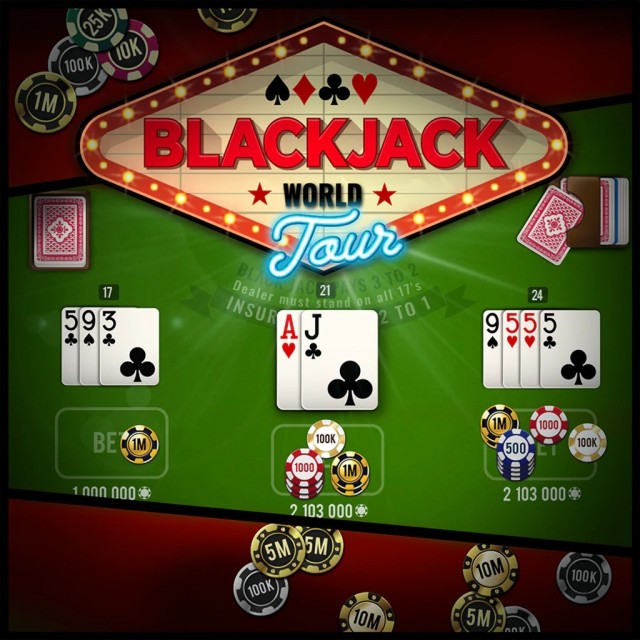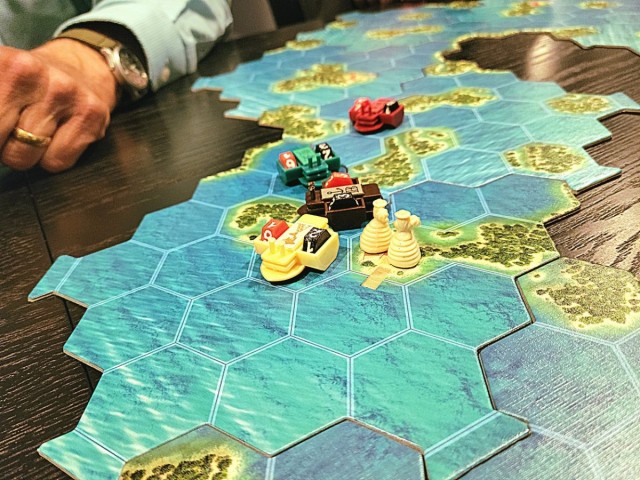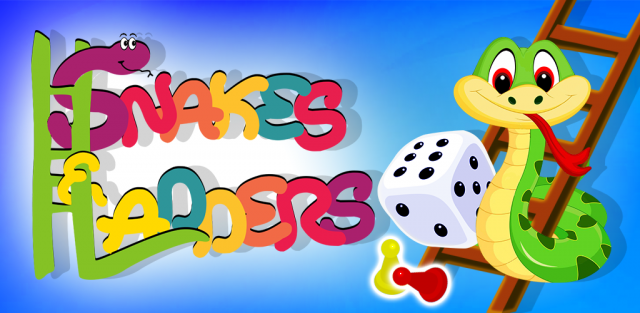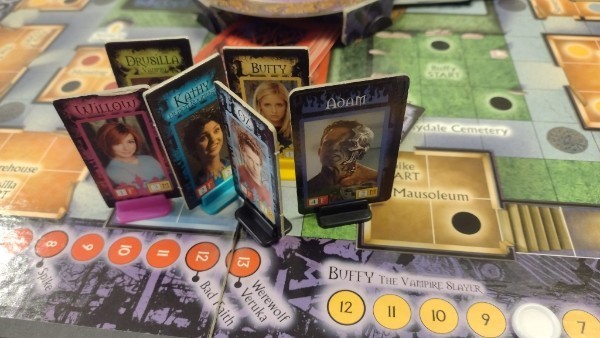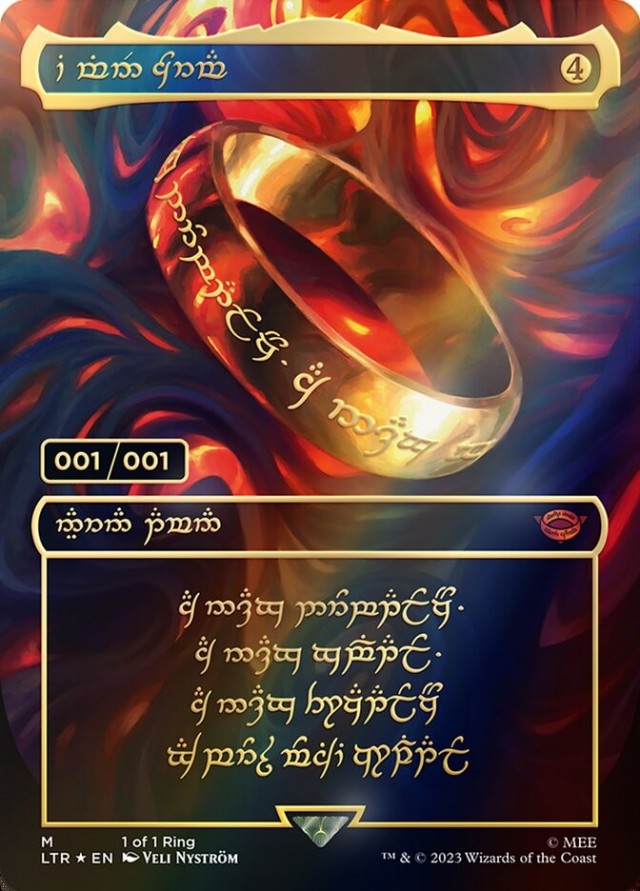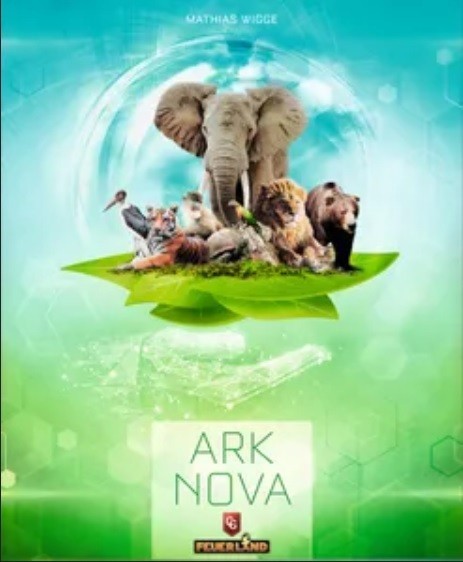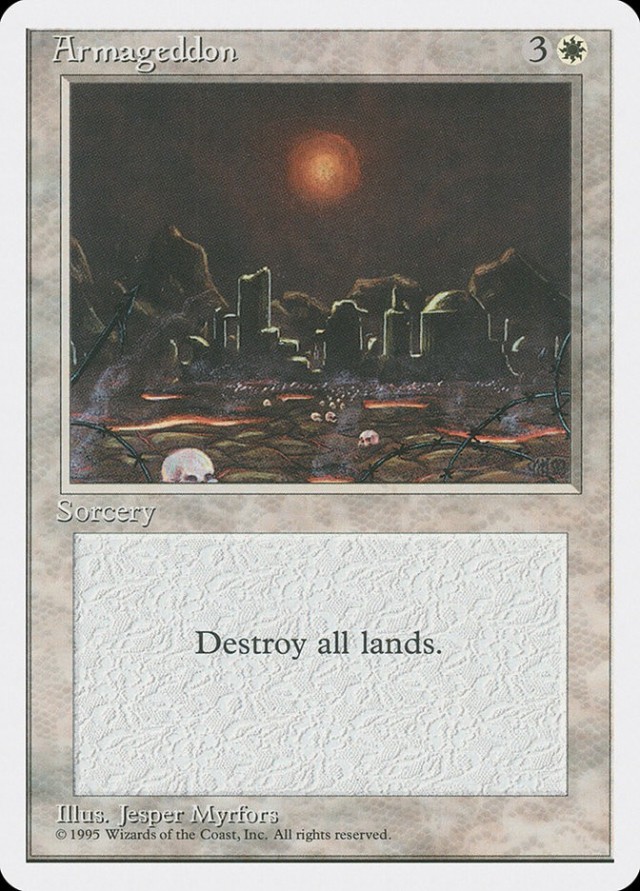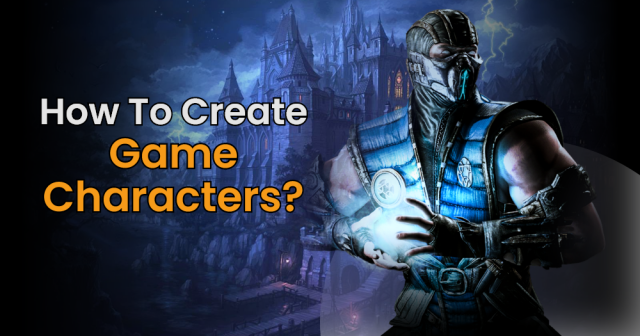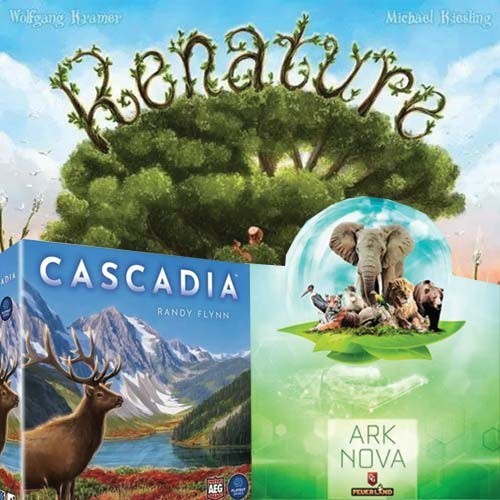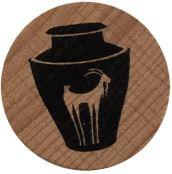Back when we rebooted and relaunched as There Will Be Games a couple of months ago, I was suddenly flooded with review copies and titles that I picked up on my own that I wanted to cover. And I've fallen behind, so this edition of Barnes on Games is kind of a "catch up" on some things that I'd really like to get the word out on- some genuine surprises in this batch. So here's a pile of games and what I think about them.
Remnants (Fireside Games)

Fireside Games is best known - and rightfully so - for Castle Panic, the castle defense game from a few years ago that got a great expansion and remains fairly popular today. Their newest issue, courtesy Justin De Witt, Matthew O'Malley, and Ben Rosset is Remnants, a post-apocalyptic survival game that probably isn't quite as grim or gritty as you might imagine. Maybe it's the Turtle Bears or Sand Bats that lighten it up a bit, or it could be the fairly light and accessible family-friendly mechanics on display here.
It is fundamentally a worker placement thing- hold on, don't leave. There's a worthwhile differentiator. At the beginning of the round you put your Survivors- which may include three different types of specialists- onto the main board. If they're in the Badlands, they are scavenging for resources. If they are in the city area, they are looting. What follows is a real-time dice-rolling marathon wherein you are trying to get three-of-a-kind to claim the limited resource tokens on the board. You don't get to smugly place your worker before someone else to block them. Here, you are actually racing them to get the goods. It's fun and fast-paced, even if in the later game it feels like the tension of shortages doesn't really amount to much. Once that scramble is over, you roll a die for every looter and get medicine, screwdrivers, and scrap. Medicine heals your Survivors, screwdrivers help you loot or fight, and scrap is a 2:1 resource trade.
You spend the resources on nine cards laid out in a display. These developments include weapons, structures, equipment and other crafted items that impart various bonuses and victory points. They each cost an assortment of the five different resources. Once everyone has spent their goods, every other round goes into a fight phase. Dread Cards (such as TURTLE BEARS) threaten your settlement and you've got to roll as many dice as you have fist icons to beat whatever is menacing the camp, with Shield icons sort of counterintuitively reducing the Dread's strength. Miss the target roll, and you are penalized by having your Survivors injured At the end of the game, there is a boss fight, wherein your people have to battle a big baddie such as King Colossal or the Scream Queen.
The design is somewhat messy but it makes a game attempt at stitching together fairly standard Eurogame mechanics, an oddly underserved genre setting, and the novelty of the real-time resource gathering. It's also not particularly inventive, despite a few twists to agreeable but perhaps too familiar formulas. I think this is one that is going to play better to audiences that don't have as much experience as, say, a games critic with 35 years of experience playing them and over 15 years of writing about them.
It mostly works, and it's definitely got some guzzoline in its tank to carry through a few outings but I've found that after a few plays I had seen and done everything there is to do with the game. It's a design that has a ceiling and I'm not sure an expansion would Interaction, despite everyone rolling dice and reaching for the last metal or plastic token or trying to buy the Flamethrower first, is really quite low and is in fact on par with most baseline worker placement games. The drama is pretty limited, and the stakes can feel terribly low. Losing your workers and having to spend a turn or two looting for medicine is narratively cool, but after a few games the routines Remnants develops feel repetitive.
But to push the needle back toward a favorable notice, it's small-box, inexpensive title that looks decent and is reasonably entertaining at a sort of B-list level. It's not innovative or unusually compelling. But it's fun and approachable, despite the lengthy rulebook and a touch of chrome.
Mars Open Tabletop Golf (Bellweather Games)

Our very own Matt Thrower has already reviewed this unexpected delight. With its lovely pink-and-orange box festooned with lively illustrations, this super simple dexterity game gets right to the heart of what makes this genre fun. It's that moment when a modicum of skill, some physics, and a smidge of luck come together to produce a Moment. It's that moment when something surprising or awesome happens backed up with that sense that you made it do that. In Mars Open, The Moment is all about flicking a little cardstock "ball" (actually a kind of folded-up square) and watching it soar over an obstacle and into a cardboard hole with a flag sticking jauntily out of it. It's about the impossible hole-in-one as much as it is about that time your buddy just could not get the damn thing across the table and you had to give him a "mercy" stroke count for the hole.
As you may surmise, this is a bona fide golf game. You set up a hole on your table with big, chunky cardboard scenery pieces and then flick your "ball" down the makeshift fairway into the hole in as few strokes as possible. You can play a 9-hole course or go a full 18. Or you can just do two or three for laughs at the end of a game night and it's jolly enough.
The rulebook comes with plenty of hole setups and it's fun to work through them, but where the magic happens is when you realize that what comes in the box is kind of a jump-off point for what you can do with this game. When I first got it, I was setting up the courses as proscribed in the rules and playing with my kids. But then, they started bickering over who got to set up the next course so I just let them do whatever they wanted. Before long we had LEGO obstacles, 10-par holes set up all the way across the room, an almost impossible down-the-stairs stunt shot, a hole set on a Warhammer table, and "wind" rules involving a handheld fan. Suddenly, the game came to life.
But you know, it made the game itself - as in the product you buy - feel almost kind of superfluous. There really isn't anything in the box you can't gin up or improvise for yourself. This isn't to say that the game itself isn't worth having. But over many plays (this was REALLY popular with my kids) the stuff you get in the game feels sort of restricted. I'd definitely like to see the concept extended, but then again...we've already extended it on our own.
Even if you are playing with the "stock" game, however, this is a real crowd-pleaser. I set up a couple of holes at a convention and, as I predicted, within 10 minutes we had 10 people that wanted to take a shot at it. Kids, old people, hardcore gamers- this is one of those "just right" dexterity games like Tumblin' Dice that people of all stripes just want to play when they see what it does. A good time for everyone.
MegaLand (Red Raven Games)

I have to admit that I wasn't crazy about Ryan Laukat's MegaLand at first. I played two games, and neither session, for whatever reason, triggered the risk-versus-reward excitement I want out of a push-your-luck design. One game was a total blowout, where a friend just completely crushed everyone at the table after a couple of super-lucrative runs. It came across like a cross between Incan Gold and Machi Koro, both games I like OK but neither of which I am particularly enthusiastic about. But I liked the concept quite a lot- it's much like how I've always thought a tabletop game set in a Mario or Sonic like platforming world ought to be.
And I've also got to admit that it was my kids that kept me playing when I was thinking about quietly moving it to the trade pile. They liked it, they would argue about who got to be the frog dude or the kitty gal, and they got it. They were playing effectively and smartly in just a couple of outings. My son did something like he's never done before- he asked how many of each card were in the level deck so he could make a good decision about whether to hang in there or bail.
There's some really smart design work here.. A card is drawn and everyone moves forward. If it's a monster, damage is dealt and if you run out of hearts, you fall and lose everything you've earned like Sonic throwing out all of his rings. If you stay in the level, you get another treasure card. At the end of your run, if you survived, you keep everything you picked up. Each level is essentially a treasure-run to gather cards to build a variety of buildings that all impart different types of advantages or bonuses, including the much-desired jump tokens that let you bound over certain monsters. More significantly, the buildings you craft give you VP coins.
I think I was playing the game expecting it to have a longer arc than it does and that translated into misjudging the value of some of the buildings - and of really cutting it close to the quick when it comes to the actual level run. This is a quick, 20-30 minute game that ends as soon as someone gets 20 coins so choosing the right buildings at the right time is essential. The 1-coin Cafe seems pointless, but it can be better to dump that lingering egg or carrot into that rather than keeping it "in the basement" of one of your previously built buildings. And the buildings that are conditional, such as the one that gives you coins if you have the least coins of all players, should be assessed based on the game state because they can make a big impact. I especially like the Temple of Zoz, which is the most expensive building in the game but it gives you 7 coins right out, and then two every time you meet the Red Serpent in the level. I managed to pick this up early in the last game we played and I won because that jerk showed up in every run afterwards.
So MegaLand had a big turnaround for me as I dug into it a little more and began to appreciate the mix-up of the stay-or-drop tension in the levels and the light strategic play in the development half of the game. It's balanced just right, and it sits squarely in the family game category. And, it bears mentioning because every other review has, the insert is one of those custom Game Trayz things and it is excellent.
Spy Club (Renegade Games/Foxtrot Games)

Spy Club, designed by Randy Hoyt and James Kingsley, is another one that needed some time to grow on me and it's another one that Matt beat me to. The problem here was that I wasn't really digging the core mechanics of the game although I absolutely adored the Encyclopedia Brown-style junior detective storyline. This co-op game finds each player investigating a set of double-sided clue cards in their hands and then confirming clues to a central display. When five cards of a suit (Suspect, Object, Location, Motive, and Crime) have been confirmed by the players, then that part of the mystery is solved. Solving all five parts, in general is how you win the game.
There are some other elements in play as well. Each player's hand is open, and a Focus marker is moved from card to card and this generates Idea tokens. You earn as many Idea tokens as you have face-up cards of the suit you've moved the Focus marker to, so it behooves you to Investigate (i.e. flip over) the cards in your hand with a previous action. Confirming cards that are slots away from your focus marker costs Idea tokens - one for each space.
The catch is you've got to do this before the Suspect gets away. He or she moves around the card displays and triggers various negative effects and sometimes moves up on an escape track. It adds some tension and urgency to the game, but it remains one the lower end of the punitive co-op scale.
In the first couple of outings, I found everything above to be pretty flat. The mystery reminded me of Android, where there isn't really a solution. The players are essentially generating the solution through play so there isn't really a sense of discovery or revelation. But here's the turnaround. The serviceable but not outstanding gameplay is a function of playing this as a single session game.
Spy Club is a campaign game and should be played as such. Now, before you run out screaming that you will never be able to get a group to play this game through a campaign, you should know that a game is about 20-30 minutes and you can complete a campaign in a single session of five games. So why do you want to play a game I've just spent a few paragraphs dissuading you from?
There are two reasons. One is that I absolutely adore the campaign mechanics. When you "solve" a crime or reach certain checkpoints, you will be asked to unlock cards from a huge deck of story elements. These change rules, mix things up, add components, and introduce a lot of quite surprising things that give the staid mechanics a kick in the pants. The campaign is also procedurally generated, so elements you discover in the first couple of games carry on through the story. Each session, one confirmed clue becomes the carry-over and represents the resolution of the full story. For example, if your first case resulted in The Twins as the suspect, the next game may have a new mechanic where you have to have two matching cards to solve a clue or you can confirm matching pairs of clues. This is really neat stuff, and the creativity and thoughtfulness of how this develops is fun to watch unfold.
The other thing I really love is how the game encourages you to come up with what all the clues actually mean without telling you. So if The Twins were Eavesdropping at the Mansion with a Hat because of Love...the players get to kind of sort out how that all fits together. It's a wonderful impetus for light storytelling around the table, and it is especially effective for any kids that are playing. They are going to love working out the connection between the Garbage Man, a Piece of Cake, the Game Store, Jealousy, and Bullying.
This is an unexpectedly excellent game, but the disclaimer here is that it's not great if you try to play it as a single session, single game affair. The excellence of the design doesn't shine until you begin to see how malleable and narrative those simplistic and maybe even dull mechanics can be made with the "Mosaic" system. I'd love to see Mr. Roxley and Mr. Kingsley do some more work with this concept.
 Games
Games How to resolve AdBlock issue?
How to resolve AdBlock issue? 